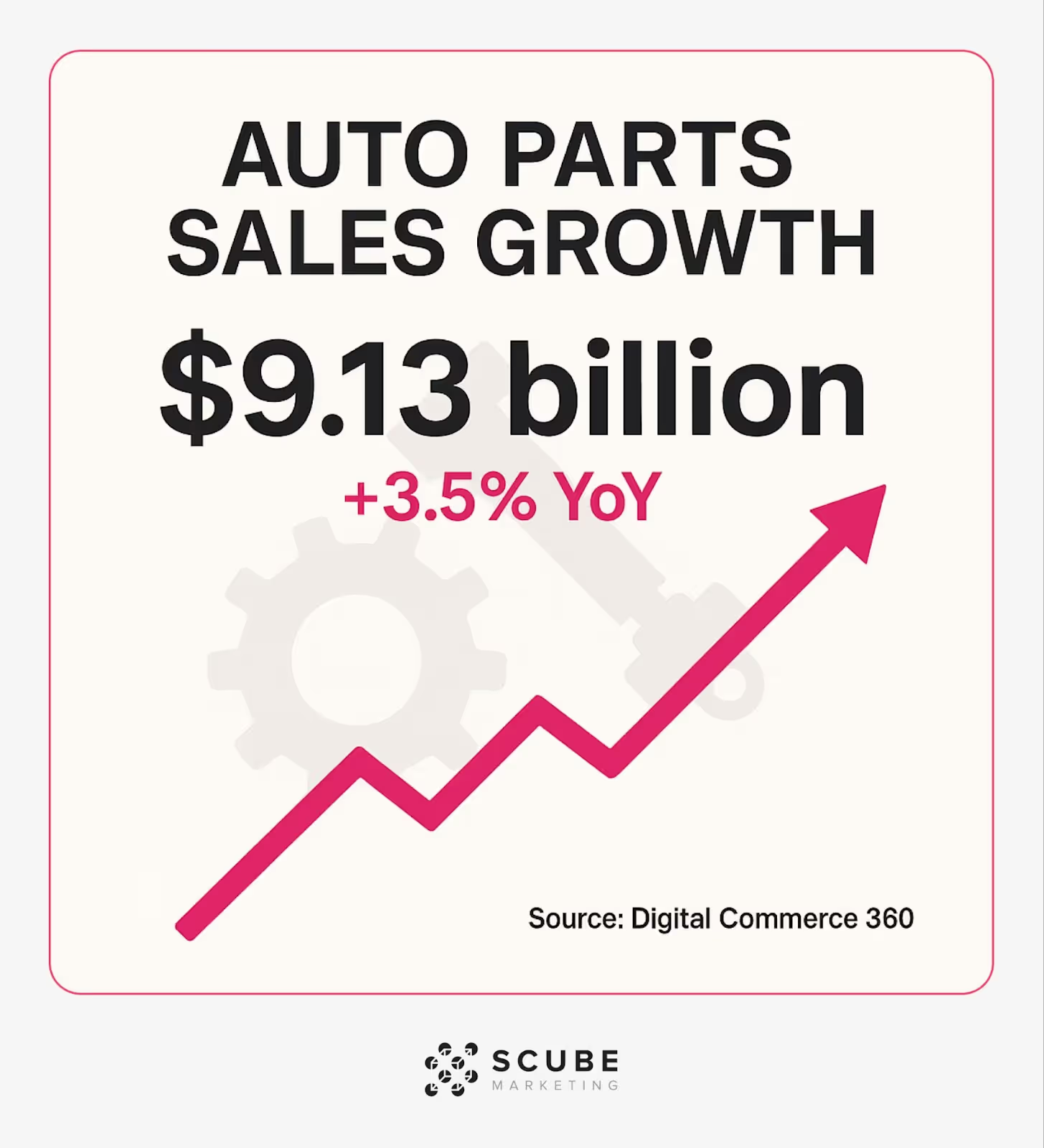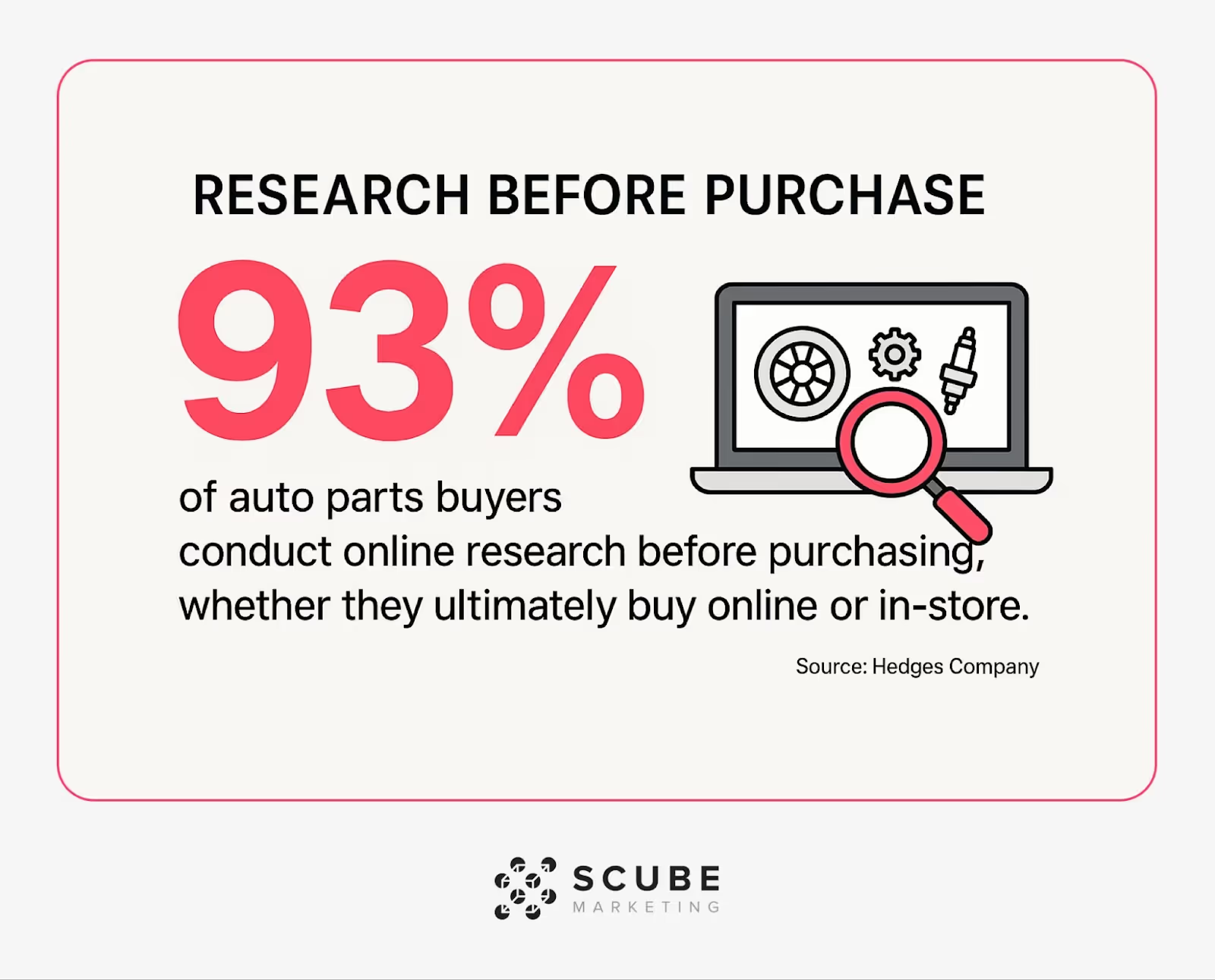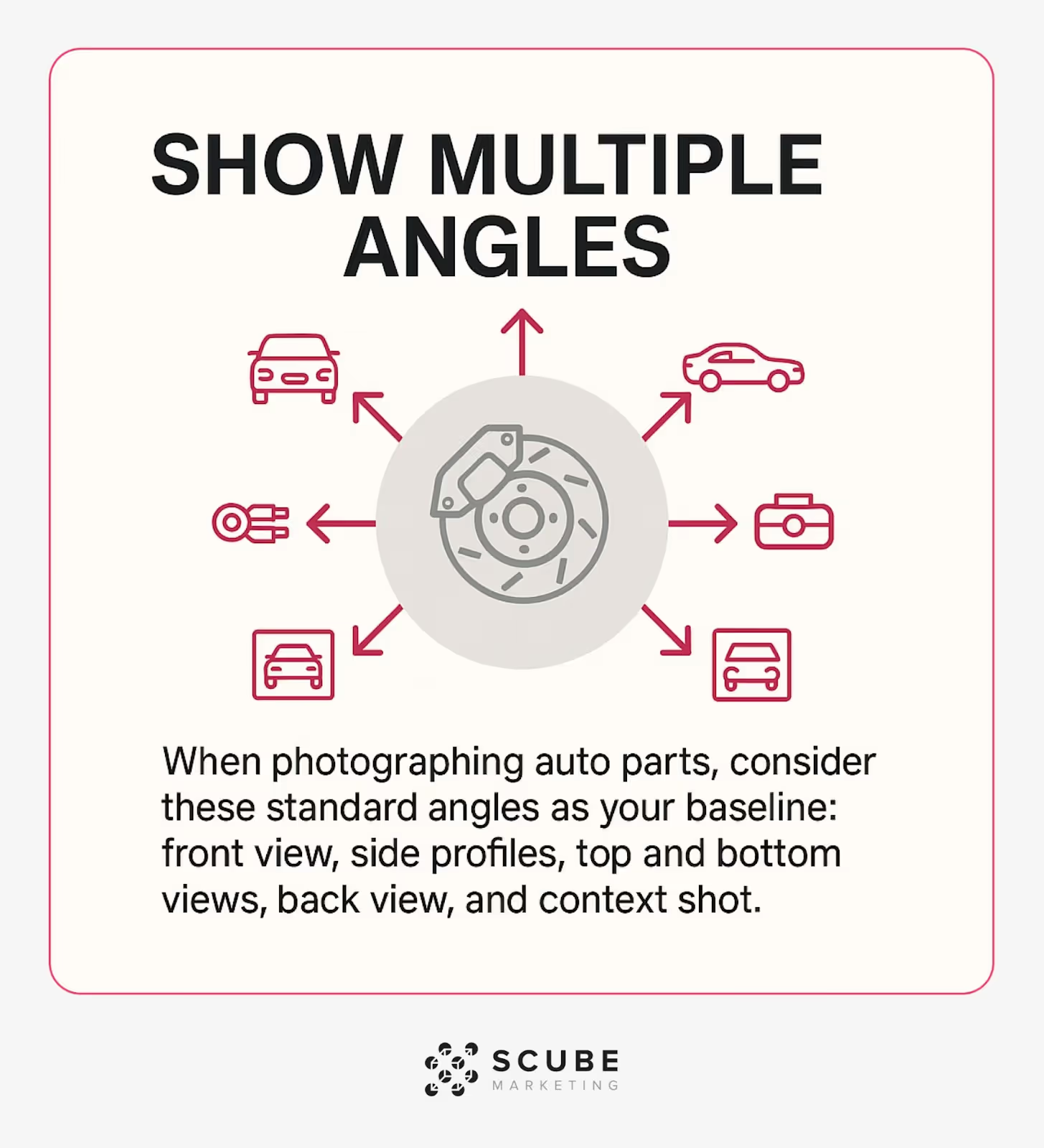
In the digital marketplace, what you show is what you sell. This truth hits especially hard for auto parts retailers. Online shoppers can't physically inspect parts before buying - they rely entirely on what you show them. Quality images and videos fill this sensory gap.
When selling auto parts online, visual content isn't just a nice-to-have feature. It's essential for conveying product details, building customer confidence, and reducing returns. U.S. online auto parts sales reached $9.13 billion in 2023, reflecting a 3.5% year-over-year increase. (Source: Digital Commerce 360)

In this guide, I'll share proven strategies for creating high-quality product images and videos that drive auto parts sales. From technical specifications to implementation tactics, you'll learn everything needed to transform your visual content into a powerful sales tool.
Visual content bridges the gap. It helps online shoppers make informed decisions without physically handling products. This matters tremendously in the auto parts industry, where fit, finish, and function are critical concerns.

An astounding 93% of auto parts buyers conduct online research before purchasing, whether they ultimately buy online or in-store. (Source: Hedges Company) During this research phase, your visual content serves as the primary decision-making tool. Poor images or missing videos can quickly send potential customers to competitors.

The stakes get even higher when we look at conversion metrics. The average conversion rate for automotive e-commerce was 1.3% in 2023, with a median order value of $224. (Source: Digital Commerce 360) With such specific conversion rates, every element that can increase confidence in the purchase decision becomes valuable.
Auto parts present unique visual challenges compared to other e-commerce categories. These products often have:
Let's explore how effective visual content addresses each of these challenges and drives more sales for your auto parts business.
Great product photography sells parts before customers read a word of your description. It answers questions, builds confidence, and reduces returns. Let's examine the critical elements that make auto parts photography effective.
One image never tells the whole story. Auto parts require comprehensive visual documentation from multiple perspectives. This thoroughness helps customers verify the part matches their needs and expectations.

When photographing auto parts, consider these standard angles as your baseline:
Each angle serves a specific purpose in the customer's decision-making process. For example, the bottom view of an oil filter might reveal the thread pattern and gasket design – critical information for ensuring proper fit.
Size matters in auto parts. Without physical context, customers struggle to visualize dimensions. This challenge is easily solved with strategic photography.
These size references eliminate guesswork and reduce return rates. When customers know exactly what they're getting, they make fewer mistaken purchases. This visual clarity benefits both you and your customers.
The devil is in the details for auto parts. Close-up images highlighting specific features help customers verify compatibility and quality. These detail shots often become the deciding factor in purchase decisions.
For example, a brake caliper listing should include close-ups of:
These details allow customers to compare the part against their existing component. They build confidence that the part will fit and function correctly. Without these details, customers often choose not to risk the purchase.
The number one question in auto parts sales is: "Will this fit my vehicle?" Effective product photography can help answer this critical question visually.
Consider creating visual compatibility charts that show which vehicle models a part fits. These reference images quickly communicate compatibility without requiring customers to read through long text lists.
These visual compatibility aids significantly reduce customer questions and increase purchase confidence. They transform complex fitment data into easily understood visual information.
Video content takes customer confidence to another level. While photos show what a part looks like, videos demonstrate how it works. This dynamic visual information addresses many customer concerns that static images cannot.
Installation videos serve multiple purposes. They show how the part fits, demonstrate required tools, and help customers assess the difficulty level. This information directly influences purchase decisions.
For complex parts, installation videos can:
I've seen firsthand with my automotive clients that parts with installation videos typically see lower return rates. Customers come better prepared for the installation process and experience fewer surprises.
Comparison videos help customers understand differences between similar products. This is especially valuable for parts available in multiple quality levels or with different features.
Effective comparison videos should:
These videos help customers self-select the right product for their specific needs. They also build trust by acknowledging product differences rather than just pushing the most expensive option.
Interactive 360-degree views give customers control over their visual inspection. This technology bridges the gap between online and in-person shopping experiences.
These interactive experiences satisfy the customer's desire to "pick up and examine" the part. They provide a sense of control and thoroughness in the research process.
Show, don't just tell, how parts perform. Performance videos demonstrate the part in action, helping customers understand what they're buying beyond static specifications.
Examples of effective performance demonstrations include:
These videos answer the crucial question: "How will this part perform once installed?" This information is nearly impossible to convey with static images or text alone.
Creating effective visual content requires meeting specific technical standards. These requirements ensure your images and videos present parts clearly and professionally across all devices.
Image quality directly impacts customer perception of your product quality. Professional-looking images suggest professional-grade parts.
These standards ensure your images display properly across devices and platforms. They also support marketplace requirements for platforms like Amazon, eBay Motors, and Google Shopping's product feed requirements.
Loading speed directly impacts conversion rates. Heavy images and videos can drive customers away before they even see your products.
For optimal loading performance while maintaining quality:
Remember that many auto parts shoppers are researching on mobile devices with potentially limited connections. Every second of loading time can impact your conversion rate.
Improving your visual content should show measurable results. These metrics help track performance and justify further investment in quality imagery.
Start by establishing baselines before making visual improvements. Then track these metrics to measure impact:
Each of these metrics provides insight into how your visual content affects customer behavior. The goal is to see positive movement across multiple metrics after implementing better imagery.
A/B testing provides clear evidence of which visual approaches work best for your specific audience. Here's how to implement effective tests:
Common A/B tests for auto parts visuals include testing standard images against 360° views, measuring the impact of installation videos, and comparing white background photos against contextual images.
With the fundamentals covered, let's examine how to implement these strategies in your business.
Most businesses can't upgrade all product visuals simultaneously. Use these criteria to prioritize your efforts:
This prioritization approach focuses your resources where they'll generate the greatest return on investment. It creates a sustainable visual upgrade pathway even with limited resources.
The choice between in-house and professional visual content creation depends on several factors:
For DIY production, you'll need:
Professional production makes sense for:
Many businesses implement a hybrid approach – creating standard images in-house while outsourcing complex video production or 360° photography to specialists.
Great visuals must be properly implemented on your website to achieve maximum impact. These integration best practices ensure optimal presentation:
For auto parts sellers looking to implement these best practices while managing inventory data, proper auto parts inventory management software can help integrate visual content with your product database.

Quality visual content isn't just about aesthetics – it's about business results. The investment in better images and videos typically pays for itself through increased conversion rates, higher average order values, and reduced returns.
The auto parts industry presents unique visual challenges, but these challenges also create opportunities. Businesses that excel at visual presentation gain a significant competitive advantage in this growing market.
Begin by assessing your current visual content against the standards outlined in this guide. Identify gaps and prioritize improvements based on potential sales impact. Even incremental upgrades can yield measurable results.
Remember that successful aftermarket auto parts e-commerce strategies always include strong visual content. When customers can clearly see what they're buying, they're more likely to complete the purchase – and less likely to return the product afterward.
Ready to improve your auto parts visual content? Start with your best-selling products and apply these principles consistently. The results will speak for themselves in your sales data.